Huawei Technologies BTS3601C-1900 CDMA Base Station User Manual Safety Precuations
Huawei Technologies Co.,Ltd CDMA Base Station Safety Precuations
Contents
- 1. User Manual 1
- 2. User Manual 2
- 3. User Manual 3
- 4. User Manual 4
User Manual 3

Installation Manual
iSiteC BTS3601C CDMA Base Station Table of Contents
i
Table of Contents
Safety Precautions .............................................................................................................. S-1
1 Overview..................................................................................................................... S-1
1.1 Symbol Explanation ........................................................................................... S-2
2 Toxic Articles............................................................................................................... S-3
2.1 Beryllium Oxide ................................................................................................. S-3
2.2 Hydrochloride .................................................................................................... S-4
2.3 Hydrofluoride..................................................................................................... S-4
3 Electrical Safety........................................................................................................... S-5
3.1 High Voltage...................................................................................................... S-5
3.2 Power Cables .................................................................................................... S-5
3.3 Tools ................................................................................................................ S-6
3.4 Drilling .............................................................................................................. S-6
3.5 Thunderstorms .................................................................................................. S-6
3.6 Static Electricity ................................................................................................. S-7
3.7 Power Labels .................................................................................................... S-8
3.8 Leakage Current................................................................................................ S-9
3.9 Flammable Air Environment................................................................................ S-9
4 Batteries ..................................................................................................................... S-9
4.1 General Operations............................................................................................ S-9
4.2 Short Circuit.................................................................................................... S-10
4.3 Harmful Gases ................................................................................................ S-10
4.4 High Temperature............................................................................................ S-11
4.5 Acid Liquid...................................................................................................... S-11
4.6 Battery Replacement........................................................................................ S-12
5 Microwave and Magnetic Field ................................................................................... S-12
5.1 Introduction ..................................................................................................... S-12
5.2 Definition of the Environment............................................................................ S-12
5.3 Operation Codes ............................................................................................. S-13
6 Laser ........................................................................................................................ S-13
7 High Temperature...................................................................................................... S-13
8 Fans ......................................................................................................................... S-14
9 Working at High Altitudes ........................................................................................... S-14
9.1 General Operations.......................................................................................... S-14
9.2 Safety Codes for Using Ladders ....................................................................... S-15
10 Other Items ............................................................................................................. S-17
10.1 Hoisting of Heavy Objects .............................................................................. S-17
10.2 Handling of Heavy Objects ............................................................................. S-18

Installation Manual
iSiteC BTS3601C CDMA Base Station Table of Contents
ii
10.3 Sharp Edges.................................................................................................. S-19
10.4 Inserting & Drawing Out the Boards ................................................................ S-20
10.5 Bundling the Signal Cables............................................................................. S-20
10.6 Maintenance and Commissioning by a Single Person is not Allowed ................. S-20
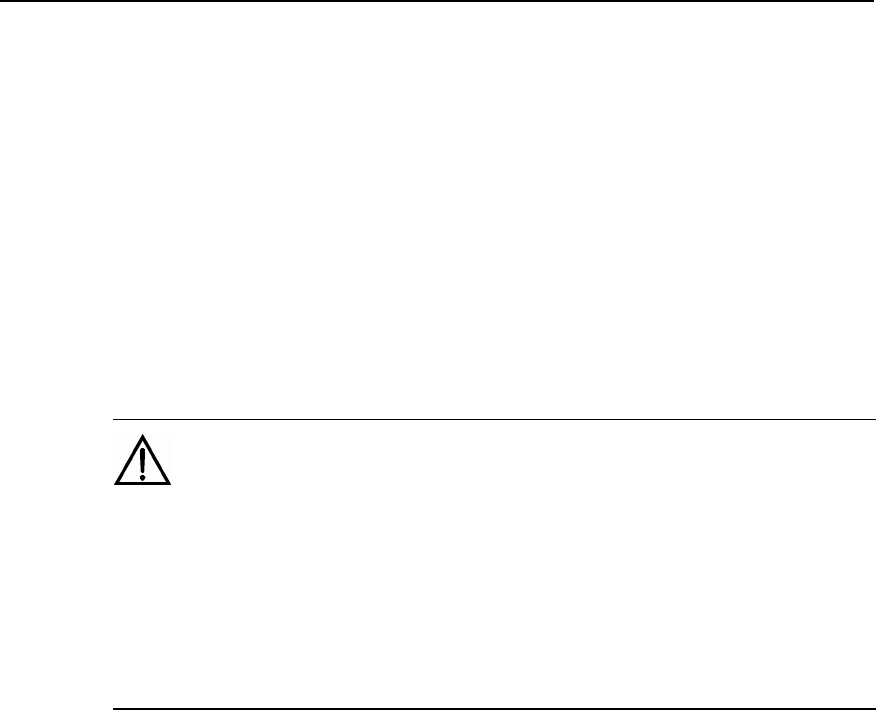
Installation Manual
iSiteC BTS3601C CDMA Base Station Safety Precautions
S-1
Safety Precautions
1 Overview
This section covers part of the safety precautions to be observed during the
installation, maintenance, and the related operation of Huawei-developed network
equipment.
Caution:
Before any operation, please carefully go through the operation instructions and precautions so as to
prevent accidents. The signs such as "Caution, Attention, Warning and Danger" in manuals are merely
the supplements to safety precautions in operations rather than all the safety precautions to be observed.
Therefore, personnel engaged in the installation and maintenance of Huawei-developed products should
have basic knowledge of safe operation, undergo relevant training and be qualified for related
operations.
Please abide by local safety regulations during the operation. The safety precautions
in this manual only serve as supplements to local safety regulations.
When operating Huawei-developed products and equipment, please strictly abide by
the precaution points and specific safety instructions concerning the equipment
provided by Huawei. The safety warnings listed in this manual only show the
precaution points that Huawei are aware of. Huawei Company does not bear any
consequence resulting from violation against universal regulations for safety
operation, or violation against the safety codes in designing, production and
equipment using.
The personnel responsible for the installation and maintenance of Huawei-developed
products should undergo strict training, command the correct operation methods and
get acquainted with various safety precautions before performing any operation such
as equipment installation, maintenance, etc.
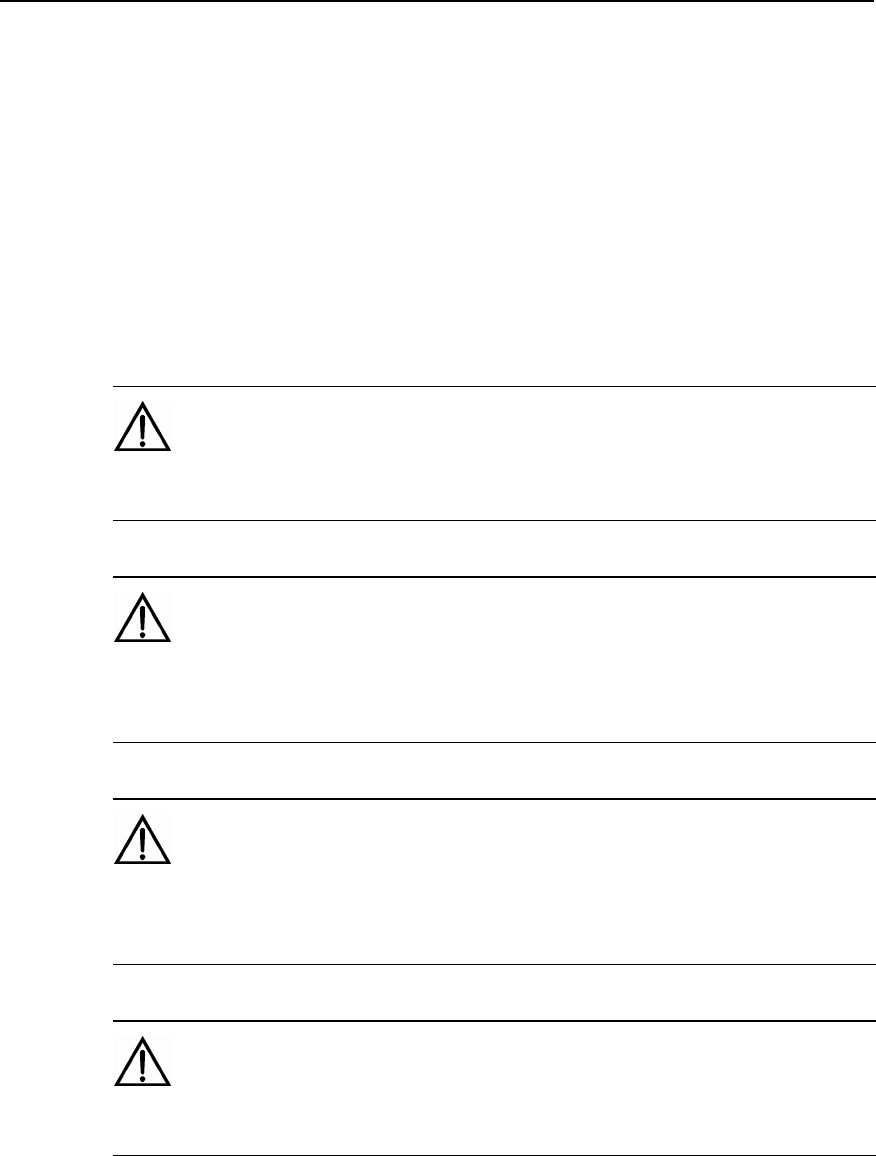
Installation Manual
iSiteC BTS3601C CDMA Base Station Safety Precautions
S-2
1.1 Symbol Explanation
The signs shown in Table 1 in this manual, are intended to remind readers of the
safety precautions to be observed during the operations of equipment installation and
maintenance.
Safety prompts are divided into the following levels: Danger, Warning, Attention and
Caution. The format is shown in the following: The text note of the safety level is
indicated to the right of the symbol. And the detailed explanations of the safety
precautions are shown below the symbol.
Danger:
Indicating that casualties or serious accident may occur if this safety instruction is ignored.
Warning:
Indicating that serious or major injuries may occur or equipment may be damaged if this safety
instruction is ignored.
Attention:
Indicating that major injuries may occur or equipment may be damaged if this safety instruction is
ignored.
Caution:
Indicating that injuries may occur or equipment may be damaged if this safety instruction is ignored.
The types and meanings of safety signs are shown in the following table.
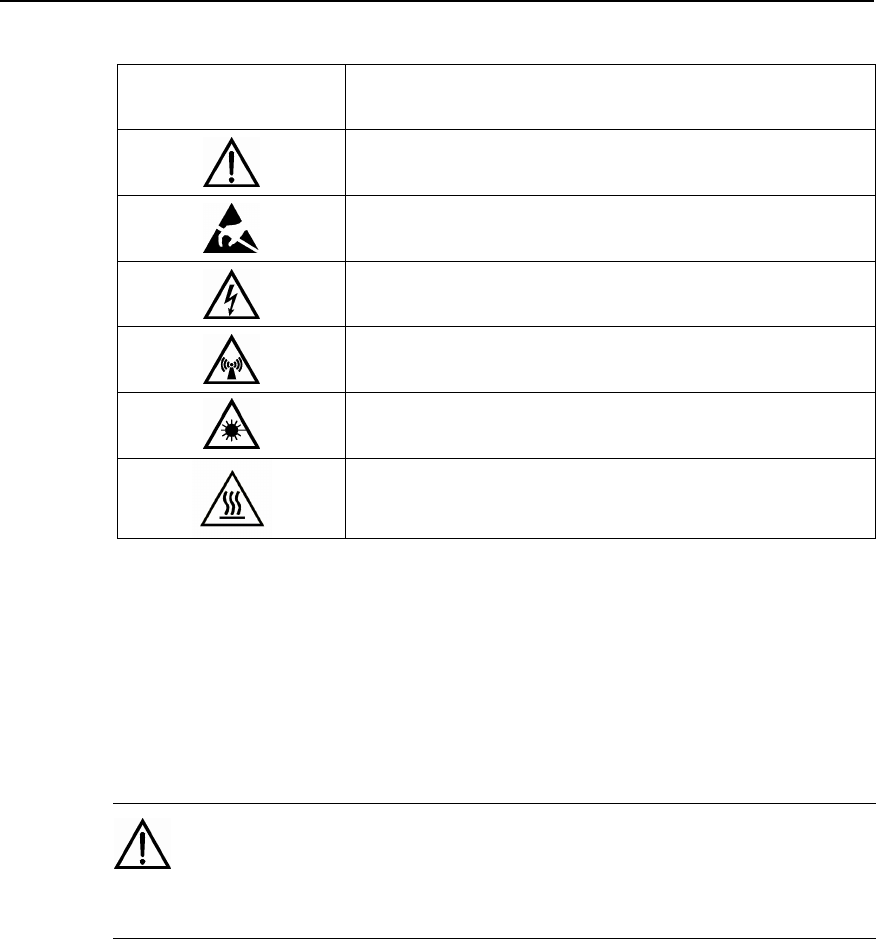
Installation Manual
iSiteC BTS3601C CDMA Base Station Safety Precautions
S-3
Table 1 Types and meanings of safety signs
Safety symbol Meaning
Common warning symbol: Indicates general safety precautions.
Anti-static symbol: Indicates that the equipment is sensitive to static
electricity.
Live-line symbol: Indicates dangerous voltage.
Microwave symbol: Indicates powerful electromagnetic field.
Laser symbol: Indicates powerful laser beam.
Scald symbol: Indicates that the equipment surface with high temperature,
which might cause scald or burns on the personnel. Upon this warning,
people should not touch the surface, so as to avoid any scald or burn.
2 Toxic Articles
2.1 Beryllium Oxide
Warning:
Some equipment components carrying toxic beryllium oxide are chosen unavoidably.
l Only when the components carrying beryllium oxide are damaged may the
beryllium oxide do harm to human body. The personnel who contact or handle
the components should be aware of the component peculiarity and take
corresponding preventive measures beforehand.
l To dispose of the component, the personnel should make necessary chemical
treatment or special waste processing for the component carrying beryllium in
accordance with related local regulations. The components carrying beryllium
should not be discarded freely.
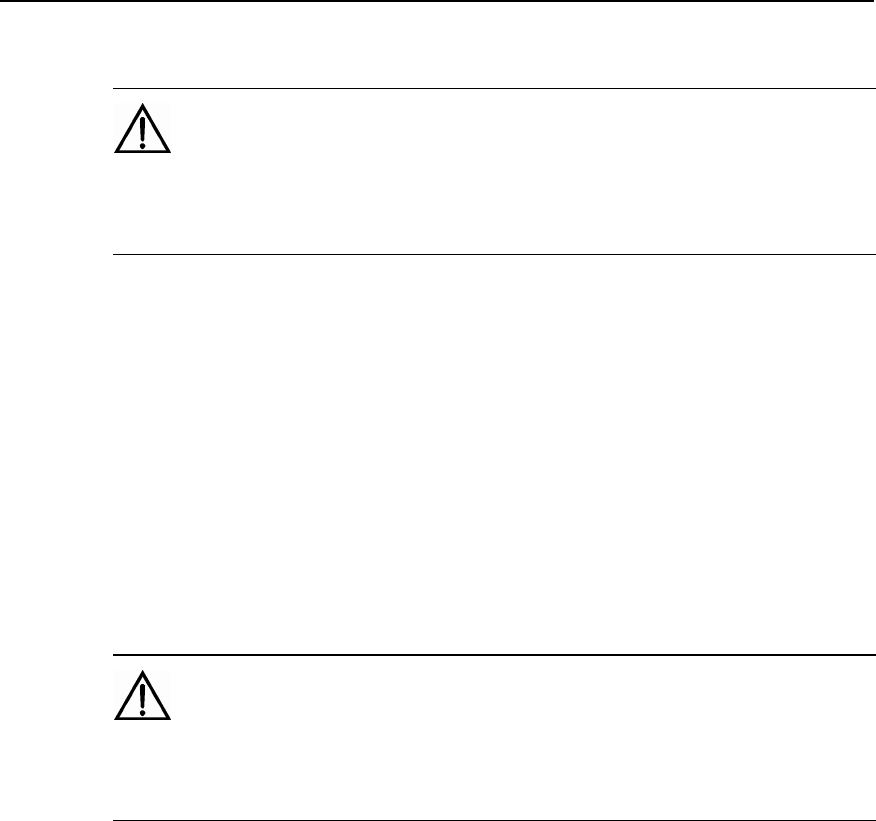
Installation Manual
iSiteC BTS3601C CDMA Base Station Safety Precautions
S-4
2.2 Hydrochloride
Warning:
Some components of the equipment carrying hydrochloride are used as it is unavoidable. Toxic gases
will be generated by these components when burned.
l Toxic gases will be generated when burning these components. Preventive
measures should be taken beforehand so that the components will not get
burned, and even if the burning occurs, the toxic gases will not be inhaled into
human body. The components should not be discarded freely. To dispose of the
component, the personnel should make necessary chemical treatment or special
waste processing for the component carrying hydrochloride in accordance with
related local regulations.
2.3 Hydrofluoride
Warning:
Some equipment components carrying hydrofluoride are chosen unavoidably. Toxic gases will be
generated when burning these components.
l Preventive measures should be taken beforehand so that the components will
not get burned, and even if the burning occurs, the toxic gases will not be
inhaled into human body. The components should not be discarded freely. To
dispose of the component, the personnel should make necessary chemical
treatment or special waste processing for the component carrying hydrofluoride
in accordance with related local regulations.
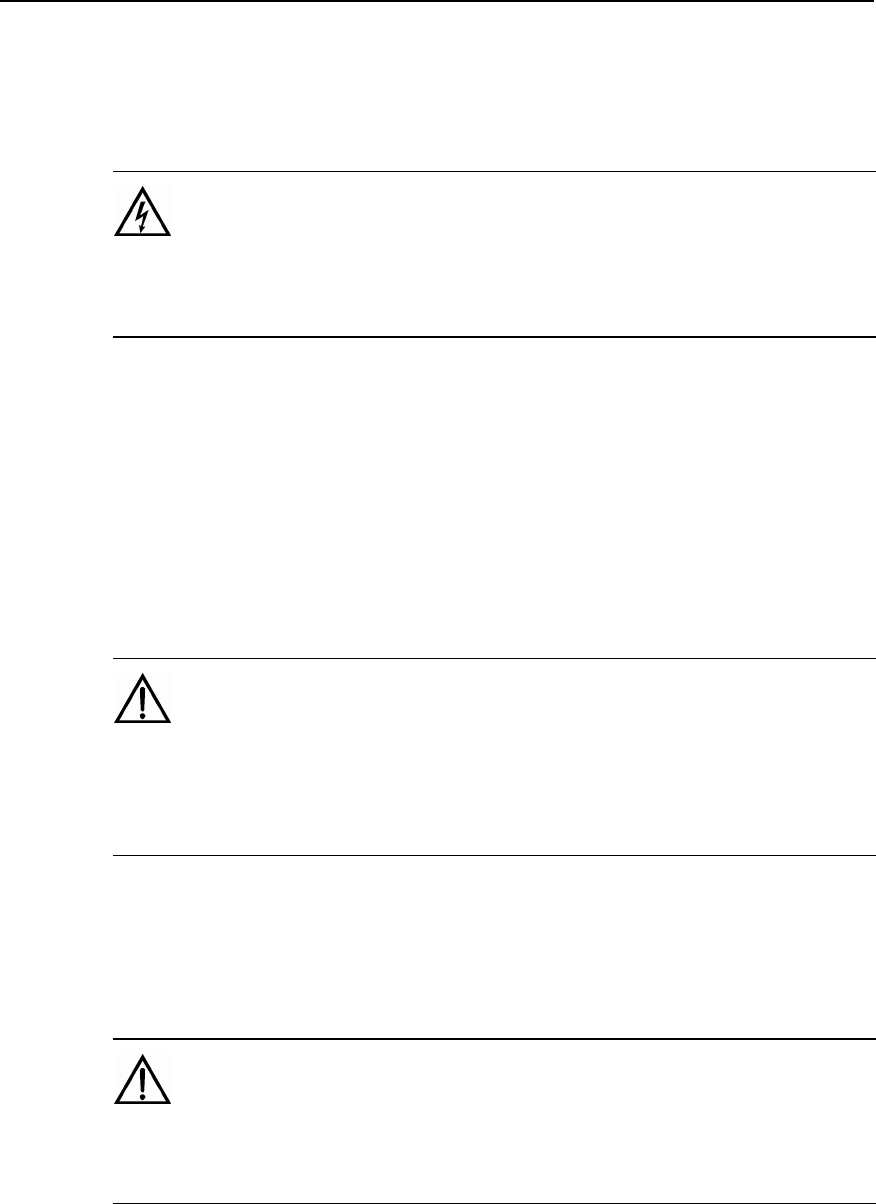
Installation Manual
iSiteC BTS3601C CDMA Base Station Safety Precautions
S-5
3 Electrical Safety
3.1 High Voltage
Danger:
High voltage power supply provides electricity for equipment operation. Direct contact or indirect contact
via damp objects and conductors with high-voltage wires or mains supply may be fatal.
l Installation of AC power supply equipment must be implemented in compliance
with local safety regulations, and the personnel engaged in AC power supply
must be qualified for high-voltage and AC operations.
l Electrical conductors such as watches, bracelets and rings must be removed
before operation.
l If the cabinet is found to be wet, please turn off power supply immediately.
l Keep the equipment dry upon operation under humid environment.
Warning:
Improper high-voltage operations may result in fire accidents and electric shocks. Therefore, AC power
cables must be laid in compliance with local codes and regulations. High-voltage operators should be
trained and qualified.
3.2 Power Cables
Caution:
Live installation and removal of power cables are prohibited. Electric sparks or arcs may be generated
when power cables get in touch with conductors, which may cause fire accidents or eye injuries.
l Power must be switched off before installation and removal of the power cable.
l Before connecting a cable, make sure that the cable and cable label to be used
should match actual installation requirements.
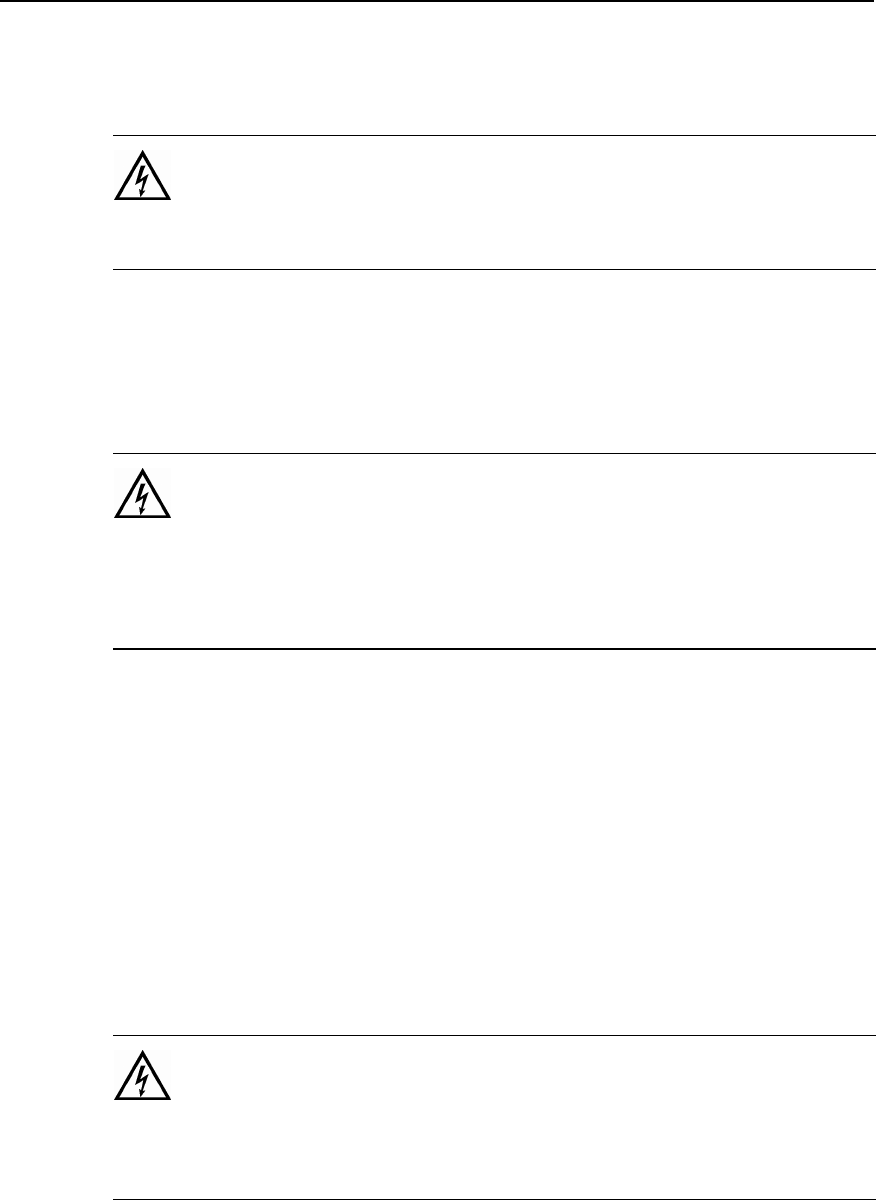
Installation Manual
iSiteC BTS3601C CDMA Base Station Safety Precautions
S-6
3.3 Tools
Warning:
High-voltage and AC operations require special tools instead of general-purpose or makeshift tools.
3.4 Drilling
Warning:
Unauthorized drilling on the cabinet is strictly prohibited. Improper drilling may damage the connections
and cables inside the cabinet and the metal filings produced during the drilling may cause short-circuits
of the circuit boards if they fall into the cabinet.
l Wear protective insulation gloves and remove the cables inside the cabinet
before drilling holes on the cabinet.
l Take care of your eyes when drilling holes. As the splashing metal burrs &scraps
may hurt your eyes.
l Prevent metal scraps from entering the cabinet inside.
l Improper drilling will damage the electromagnetic shielding performance of the
cabinet.
l Clean up the metal scraps after drilling.
3.5 Thunderstorms
Danger:
High-voltage and AC operations and operations on the steel towers and masts are strictly prohibited in a
stormy weather.
l Thunderstorms can generate powerful electromagnetic field in the atmosphere.
Therefore, equipment should be grounded properly in order to prevent the
equipment from being thunderstruck.
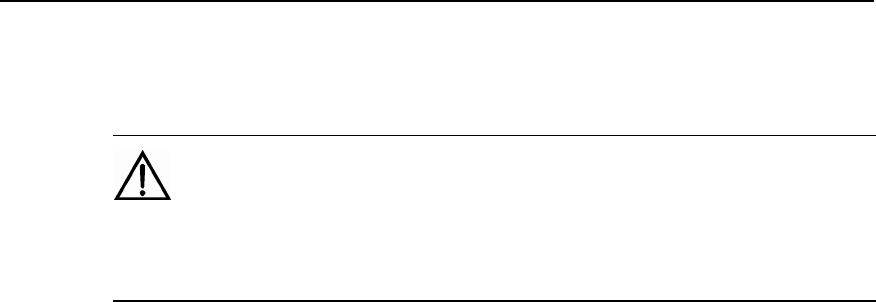
Installation Manual
iSiteC BTS3601C CDMA Base Station Safety Precautions
S-7
3.6 Static Electricity
Caution:
Static electricity generated by the human body may damage the electrostatic-sensitive parts on the
circuit boards, such as large-scale integrated circuit (IC).
l The grating generated between human activities and the components is the
rootage for electrostatic charge accumulation. In dry climate, the electrostatic
charge carried by human body may go up to 30 kV, which will remain on the
human body for a rather long period of time. The operator’s contact with the
sensitive component and the resultant electric discharge will cause damage to
the component.
l Before contacting/touching any equipment such as holding plug-in boards, circuit
boards and IC chips, put on the anti-static wrist strap with one end well grounded
so as to prevent sensitive parts from getting damaged by static electricity on the
human body.
l Before operators touch the board or module, they should release the
electrostatic charge in their body. That is, before the operator touches a board or
a module, he or she must wear the anti-static grounded wrist strap. The
connecting line between the wrist and the grounding point should connect in
series with a resistance greater than 1 M¦¸ to protect people from being
accidentally shocked. The resistance value greater than 1 M, is rather low in
terms of electrostatic voltage discharging. The anti-static wrist strap should be
checked regularly. Using other cable to replace the cable of anti-static wrist strap
is strictly prohibited.
l Electrostatic-sensitive board or module should not be in contact with the object
with static electricity or the object that may easily generate static electricity. For
instance, packaging bags, delivery boxes and conveyor belts made of insulating
materials will generate static electricity by themselves, and can cause
electrostatic charging when in contact with human body or the earth and might
thus bring forth damages.
l Electrostatic-sensitive boards or modules can only contact quality discharging
materials, such as anti-static packing bags. The board in stock or in the course
of transportation should be packaged with anti-static packing bag.
l Before the measurement device is connected to boards or modules, first
discharge its static electricity, that is, the measurement device should be
grounded first.
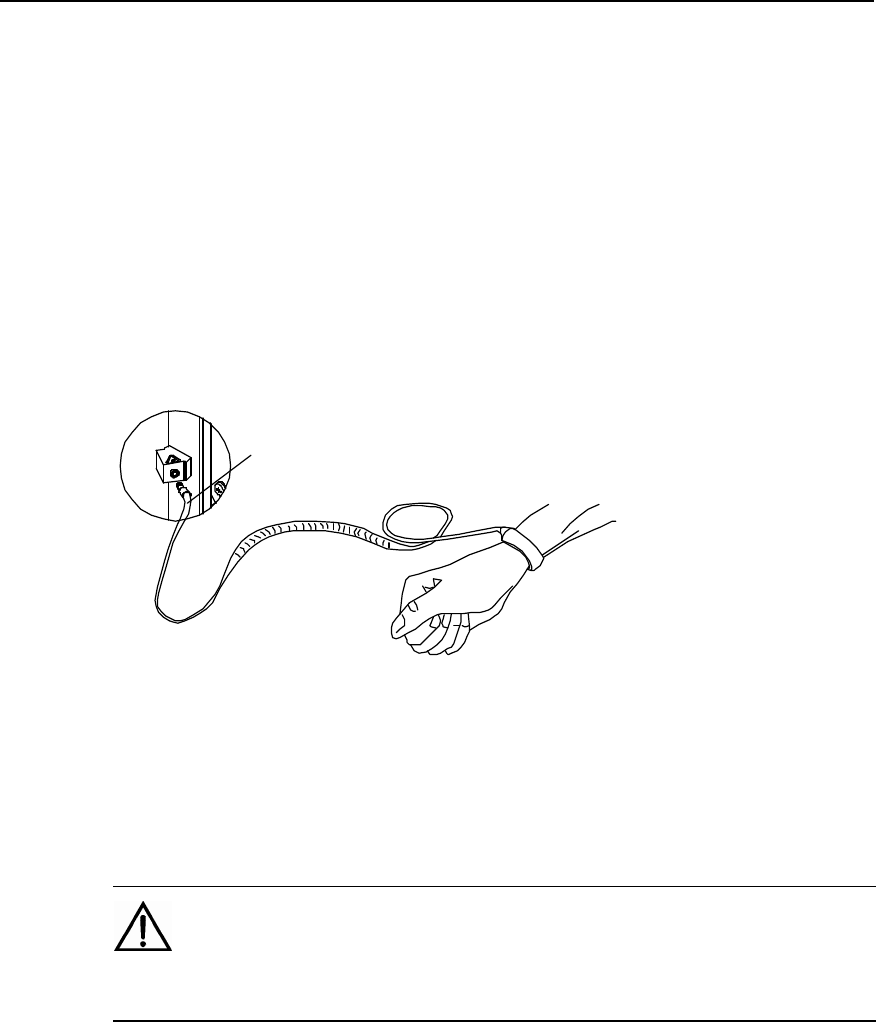
Installation Manual
iSiteC BTS3601C CDMA Base Station Safety Precautions
S-8
l The single board or module should not be placed near strong DC magnetic field,
for instance, near the cathode ray tube of the oscilloscope. The safety distance
should be at least 10 cm.
l Damage caused by static electricity is accumulative. If the damage is slight, the
component will not malfunction. However, as the number of damages increase,
the components may suddenly fail. The electrostatic discharging damage to the
component is of two types: obvious damage and hidden damage. Hidden
damage is not shown when the damage occurs, whereas the component may
become vulnerable and easily get damaged under the condition of over-voltage
and of high-temperature.
The correct way of wearing anti-static wrist strap is shown in Figure 1.
Plug of anti-static wrist strap
Figure 1 Wearing the anti-static wrist strap
3.7 Power Labels
Caution:
Before connecting the cables, check the correctness of labels and then make the connection.
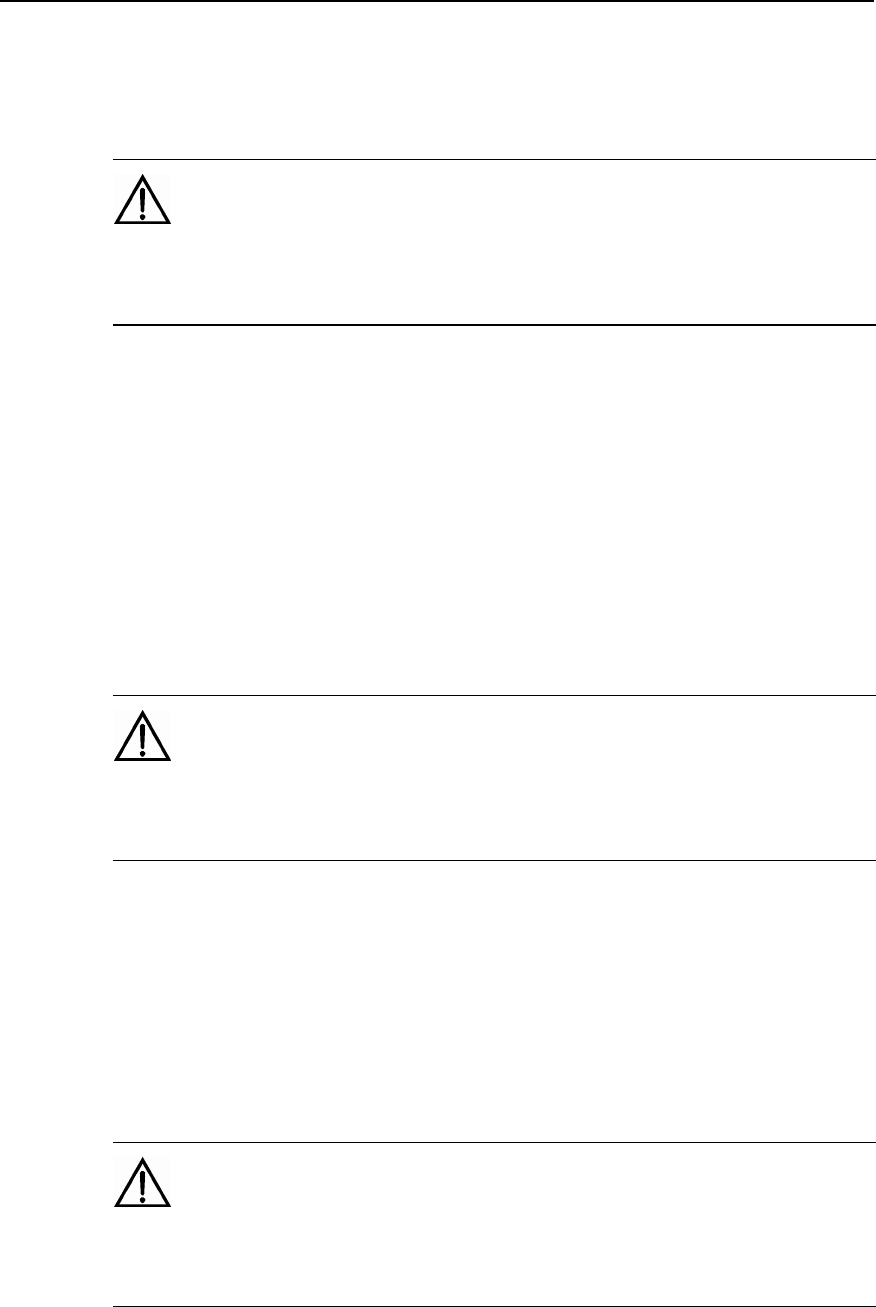
Installation Manual
iSiteC BTS3601C CDMA Base Station Safety Precautions
S-9
3.8 Leakage Current
Warning:
To avoid the occurrence of large leakage current, the equipment must be grounded before connecting to
the power supply.
l Before connecting the AC input power supply, the operation and maintenance
personnel should first connect the protection-grounding terminal of the
equipment housing to the earth. The purpose of doing so is to avoid electric
shock on human body resulting from leakage current, which is usually caused by
the earth capacitance of the EMI wave filter at the AC power supply input
terminal of the equipment or the Y capacitance of the primary power supply.
3.9 Flammable Air Environment
Danger:
The equipment should not be placed in an environment where flammable, explosive air or smog exists.
No operation should be performed under such an environment.
l The operation on any electronic equipment under such an environment will pose
absolute threat to the equipment & the operating personnel.
4 Batteries
4.1 General Operations
Danger:
Before undertaking the battery operations, the personnel should carefully read the safety precautions for
handling batteries and the correct connection of batteries.
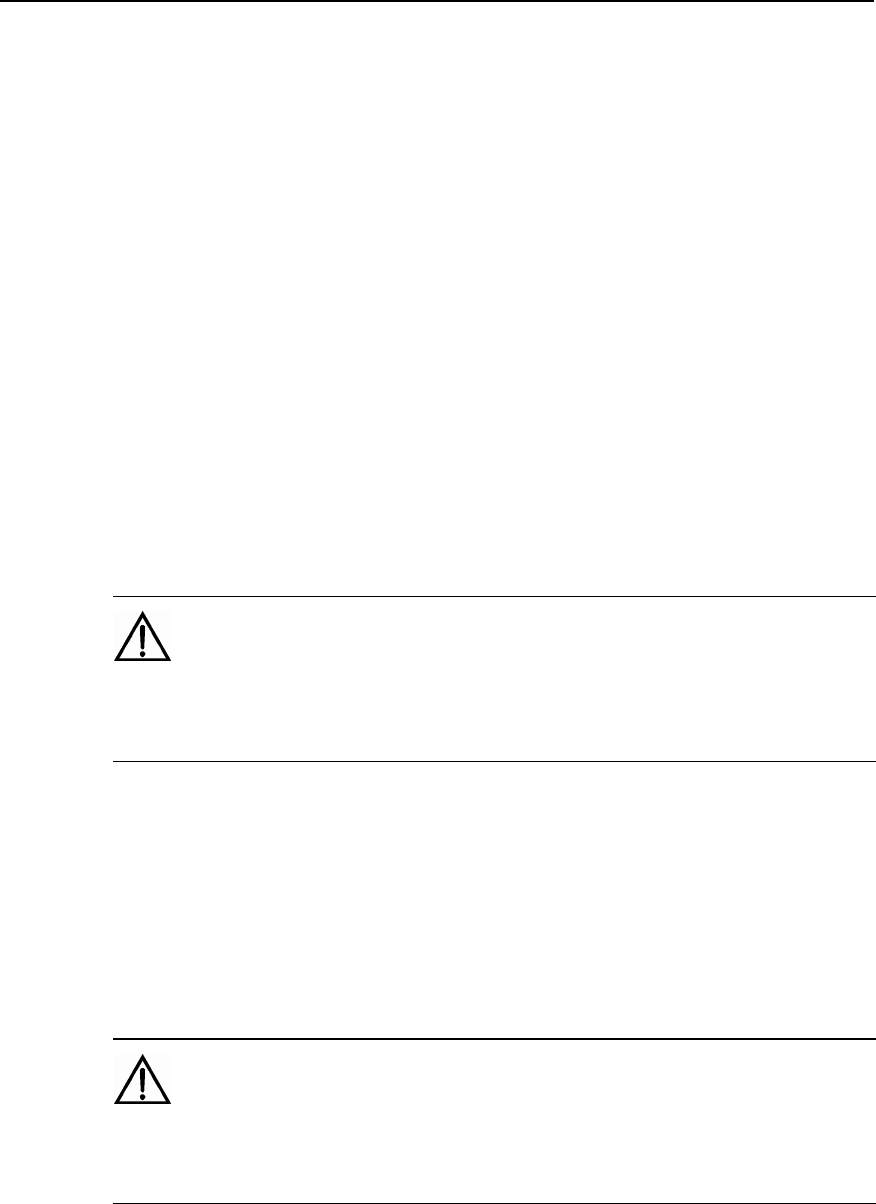
Installation Manual
iSiteC BTS3601C CDMA Base Station Safety Precautions
S-10
l Improper operation of batteries will be dangerous. Guard against short-circuits of
batteries or electrolyte spillover in operation, which may pose a potential threat
to equipment, corrode metal articles and circuit boards, damage equipment and
result in short circuit of circuit board.
l Before installation and maintenance of batteries, take the following measures to
ensure safety:
l The batteries should be handled with care. Avoid strenuous vibration when
handling them.
l Metal articles such as watches, bracelets and rings must be removed.
l Use special insulated tools.
l Wear eye protection gears and take preventive measures.
l Wear rubber gloves and apron in case of electrolyte spillover.
l Hold the positive pole of batteries upright during handling. Do not handle them
upside down or in slant position.
4.2 Short Circuit
Caution:
Short-circuit of the battery will cause personal injury. Although the voltage of ordinary battery is not high,
the powerful instantaneous current generated by short-circuit may release immense energy.
l Prevent short-circuits of batteries caused by metal articles, such as short-circuit
caused by improper use of tools. If allowed, first disconnect the batteries and
then proceed with other operations.
4.3 Harmful Gases
Caution:
Unsealed lead acid batteries should not be used, as the gas released from the batteries may cause fires
or equipment corrosion. Batteries should be fixed horizontally.
l Batteries may release inflammable gases in operation, so the place where the
batteries are placed should be well ventilated and fire prevention measures
should be taken.
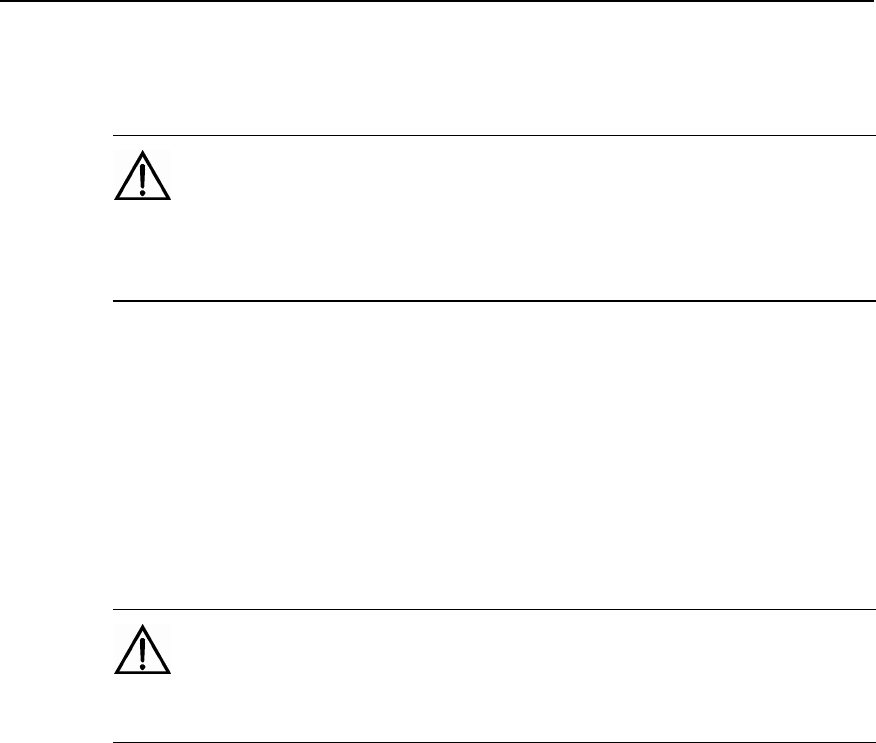
Installation Manual
iSiteC BTS3601C CDMA Base Station Safety Precautions
S-11
4.4 High Temperature
Caution:
Excessively high temperature of batteries will cause deformation and damage to batteries and spillover
of acid liquid.
l When the temperature of battery is over 600C, check and see whether there is
spillover of acid liquid.
l In case of acid liquid spillover, please make proper and timely treatment of acid
spillover.
4.5 Acid Liquid
Caution:
In case of acid liquid spillover, make sure that the spillovers are absorbed and neutralized.
l To move leaking batteries, bear in mind the possible damages that may be
caused by the acid liquid. Once acid liquid is found to have spilt over, absorb and
neutralize it with the following materials.
Bicarbonate: NaHCO3
Barilla: Na2CO3
Soda: Na2CO3$10H2O
l Consult the battery manufacturers as regards materials used to absorb and
neutralize acid liquid.
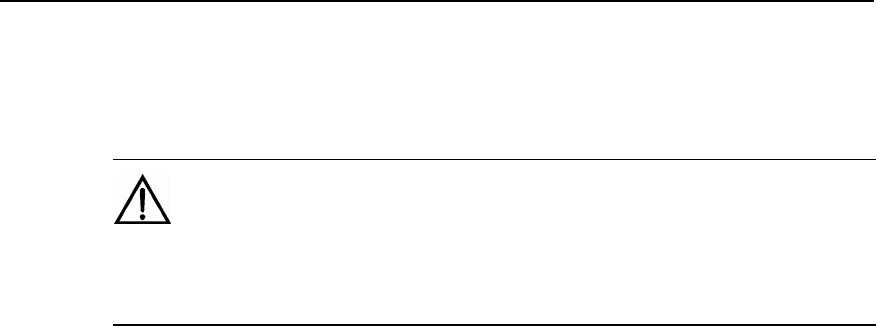
Installation Manual
iSiteC BTS3601C CDMA Base Station Safety Precautions
S-12
4.6 Battery Replacement
Warning:
Operation and maintenance personnel should not replace the batteries of specified model with that of
other model. Otherwise, possible explosion may incur.
5 Microwave and Magnetic Field
5.1 Introduction
The equipment antenna in service will generate electromagnetic radiation. Standing
too close to the antenna violates the safety codes. The equipment can only be
installed and maintained by trained professional personnel. The radiation design of
the equipment should meet the IEEE C95.1-1991 recommendation. When working
near the full-power transmitting antenna, one should first read the following safety
working requirements.
5.2 Definition of the Environment
The uppermost level limit of the environment that can be exposed to radio magnetic
radiation is of two kinds: one is "controlled environment" and the other is
"uncontrolled environment " with less radiation.
l Controlled Environment
Controlled environment refers to a certain location where the personnel who enter the
area are aware of the potential threat of exposing themselves to the radio frequency
radiation environment. Generally, the personnel enter such areas for the profession
requirements and they get acquainted with this danger or they just pass by the areas
where possible radiation exists. The magnetic field level of the area is higher than
that of "uncontrolled environment" but no greater than that of "controlled environment"
listed in the table.
l Uncontrolled Environment
"Uncontrolled environment" refers to a certain location where the personnel who enter
the area are not aware of the potential threat of exposing themselves to the radio
frequency radiation environment, and they cannot control the environment where they
are situated. This location may include living environment or working environment.
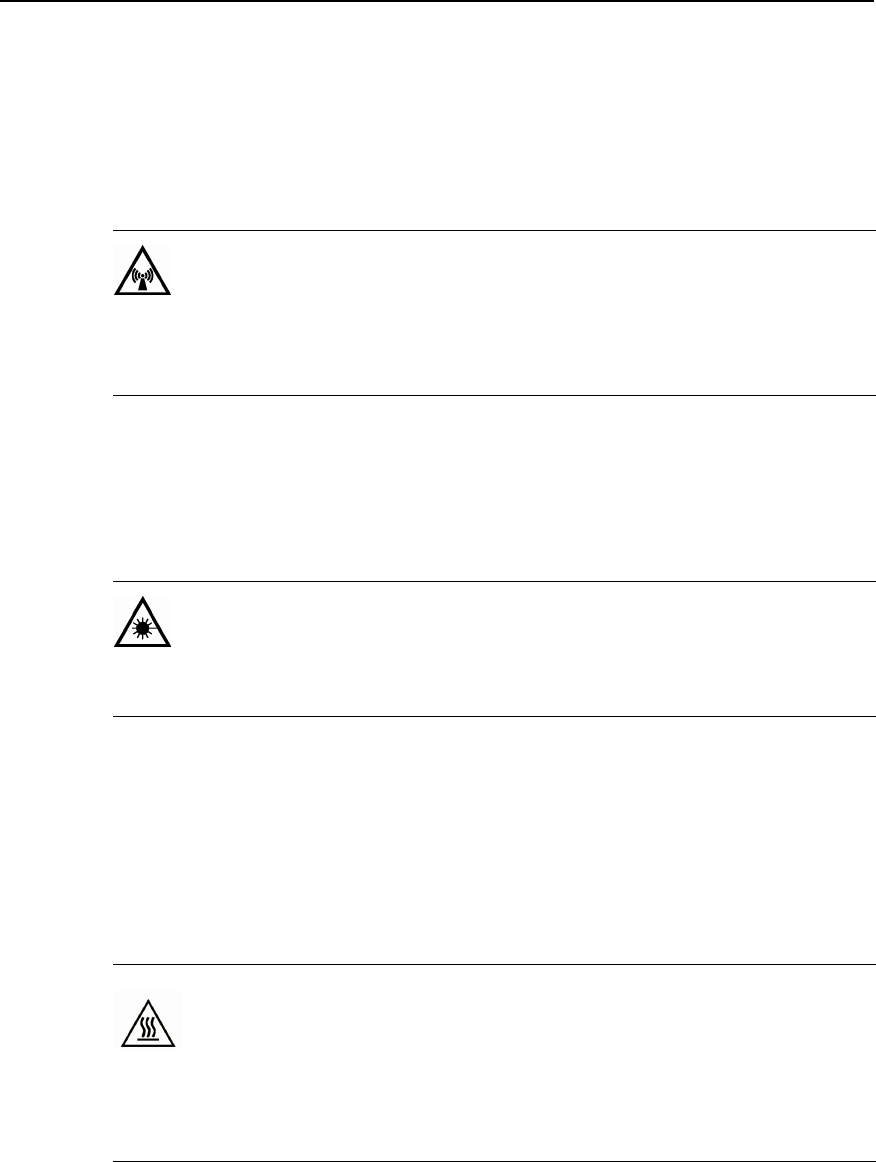
Installation Manual
iSiteC BTS3601C CDMA Base Station Safety Precautions
S-13
The magnetic field level of the location cannot be greater than the uppermost level
under the "uncontrolled environment" listed in the table.
5.3 Operation Codes
Warning:
When operating on the high intensity radio frequency signal equipment, bear in mind that the
high-intensity microwave is detrimental to human health.
6 Laser
Warning:
Laser beams inside optical fibers may do harm to your eyes.
l During the installation and maintenance of optical fibers, keep eyes away from,
or avoid direct look at the optical fiber or optical transceiver outlet.
7 High Temperature
Warning:
It is unavoidable that the temperatures of some equipment parts are rather high. Please do not touch the
surface as you wish, else scalding may occur.
l When the equipment is running in the tropical environment, the temperature
benchmark of the parts is 450C and the maximum range of temperature rise
allowed is 300C under normal working conditions. When fault occurs, the
maximum temperature rise allowed is 550C. So when the parts work at the high
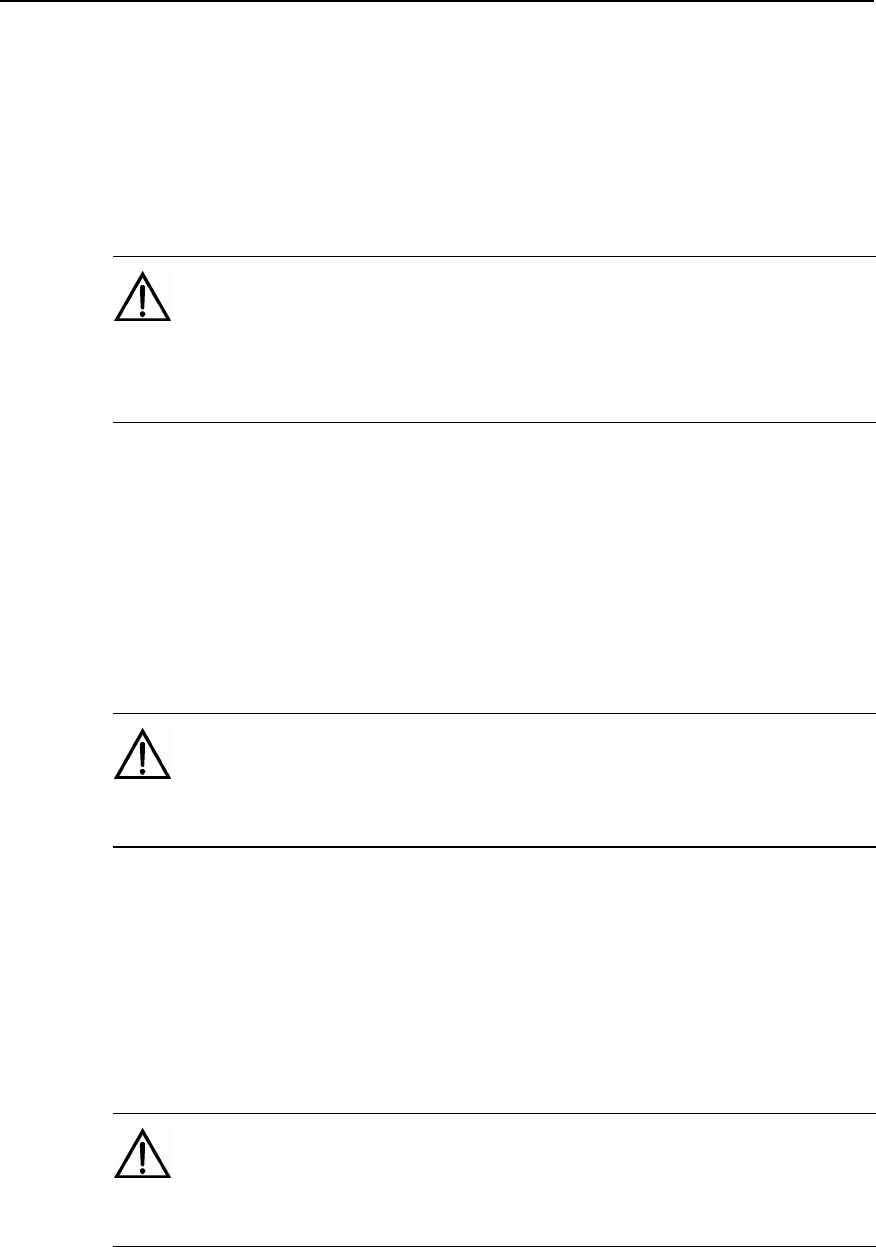
Installation Manual
iSiteC BTS3601C CDMA Base Station Safety Precautions
S-14
temperature of 450C under normal working conditions, their highest temperature
should not exceed 750C, and when fault occurs, the highest temperature should
not exceed 1000C.
8 Fans
Warning:
To dismount the fan which is running, never dip the finger or tool into the fan that is running before the
fan is powered off or stops running to avoid damage to the equipment or injuries to human body.
l Dipping the finger into the fan while it is running may cause injuries.
l When replacing related parts, place the objects such as the parts, screws, and
tools properly. Make sure that they would not fall into the running fan, otherwise
they will damage the fan or the related equipment.
l When replacing the peripheral equipment of the fan, never dip the finger or
board into the fan to avoid any possible injuries to the equipment or the hands.
Warning:
Keep your hands and body away from the dangerous running parts to avoid possible injuries.
9 Working at High Altitudes
9.1 General Operations
Warning:
When working at heights, beware of falling objects.
Working at heights must be in accordance with the related national regulations:
l Personnel working at heights must have undergone appropriate training.
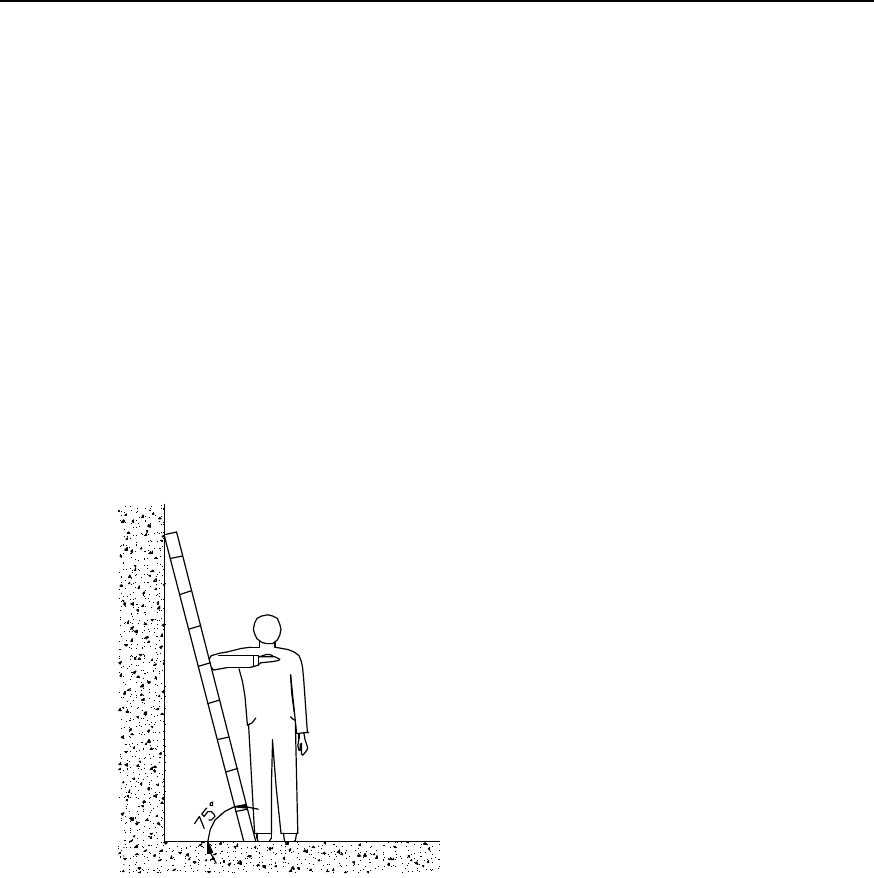
Installation Manual
iSiteC BTS3601C CDMA Base Station Safety Precautions
S-15
l Take care of the mechanical devices and tools and prevent them from falling
down.
l Follow safety precautions and wear helmet and safety belt.
l Put on cold-proof clothes before working at heights in cold areas.
l Check and approve all the lifting devices before working at heights.
9.2 Safety Codes for Using Ladders
l Before using the ladder, first check and see whether the ladder is damaged.
Make sure the ladder is safe for use. Overload on the ladder is strictly prohibited.
l When operating under the conditions that the leaning distance of the ladder is
over 5measurement, and that of the erected ladder with two-foot is over 3meters,
and other dangerous environment, the ladder should be held by somebody or
relevant safe measures should be effected. The A-shaped ladder should be
completely stretched for using, as shown in Figure 2 below.
Figure 2 The angle at which the ladder should be leaned
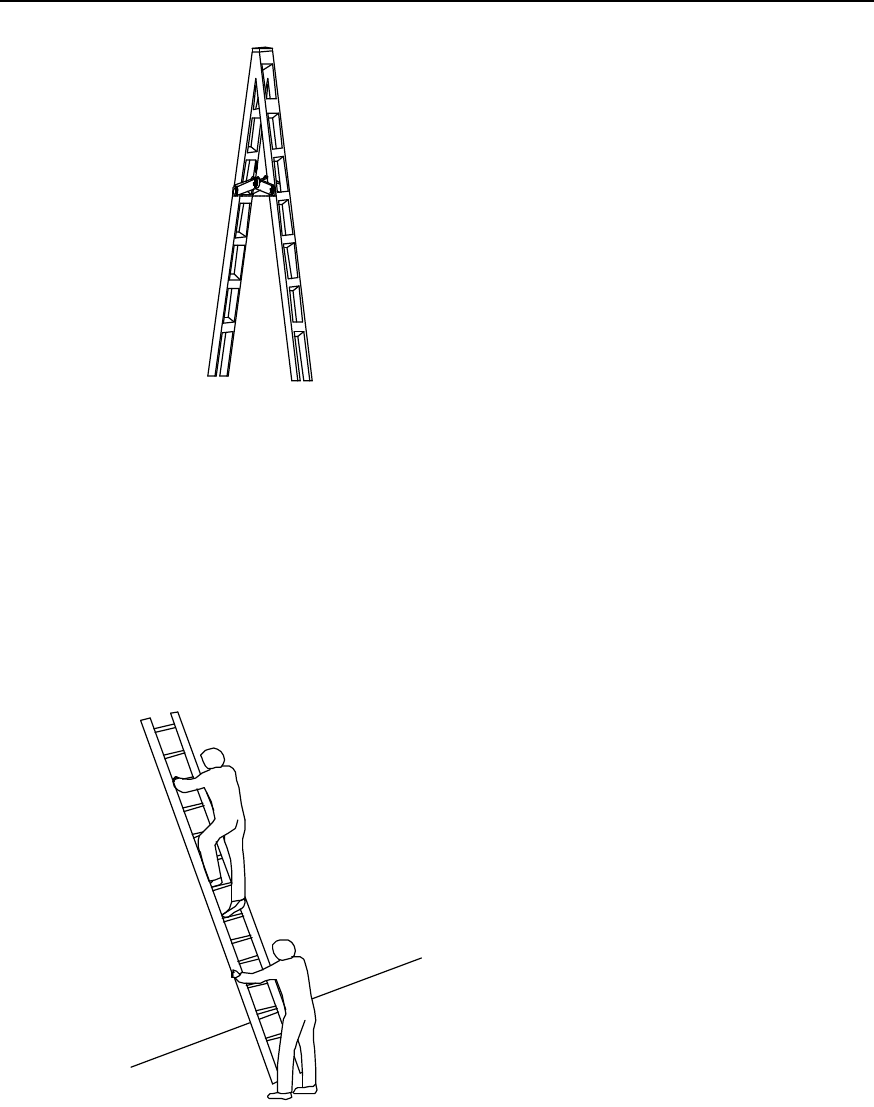
Installation Manual
iSiteC BTS3601C CDMA Base Station Safety Precautions
S-16
Figure 3 Stretching the A-shaped ladder
l It is recommended that the slope of the ladder be 750. The slope can be
measured with angle square or with arm, as shown in the Figure 3. When using
the ladder, the wider end of the ladder should be placed against the ground or
protective measures should be taken at the bottom of the ladder for the purpose
of skid resistance. Place the ladder against a stable ground and do not place the
ladder against those objects that are easy to lean and slide themselves such as
paper box, stone and so on.
Figure 4 Climbing and using the long ladder in a safe way
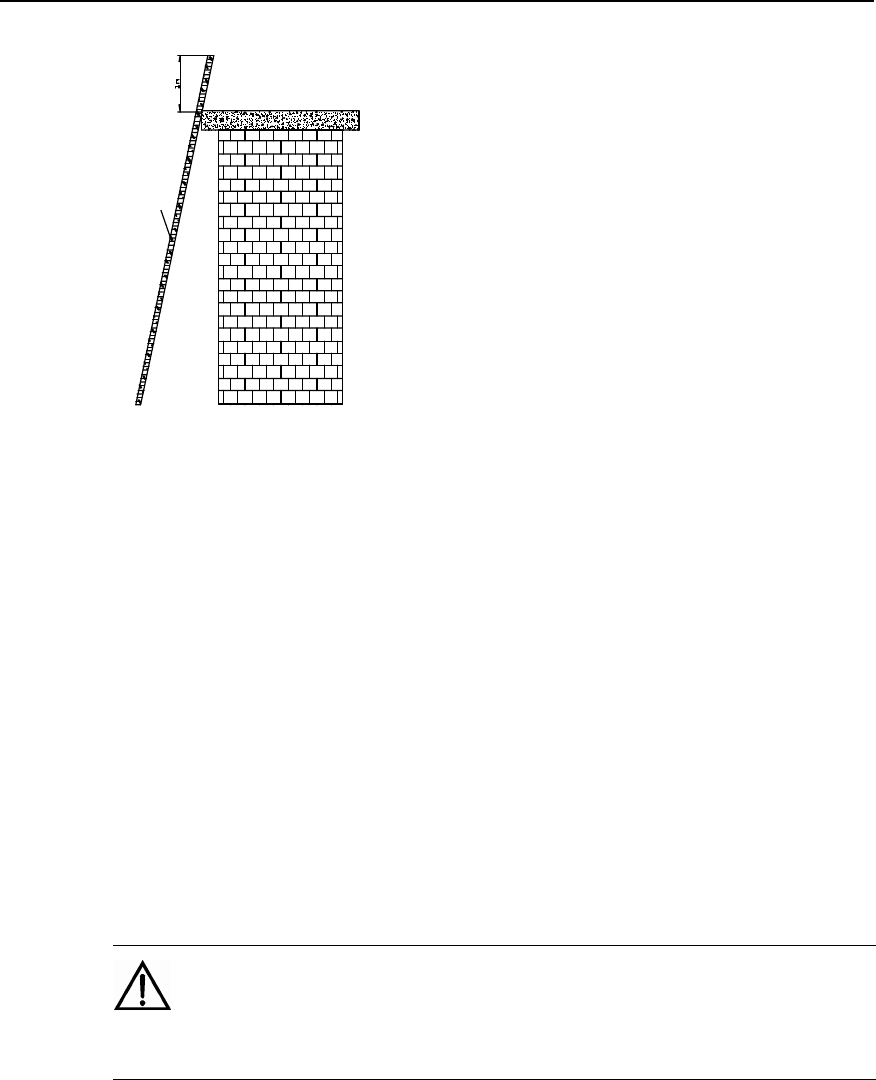
Installation Manual
iSiteC BTS3601C CDMA Base Station Safety Precautions
S-17
Ladder
Figure 5 Placing the ladder with the top 1 meter higher above the edge of the roof-top
l When climbing the ladder, one’s center of gravity should not deviate from the
ladder edge. To avoid danger and ensure safety, make sure that three parts of
the body should be kept on the ladder, that is, the feet should be pressed against
the ladder and one hand fast grips the ladder, as shown in Figure 4. Never climb
the topmost four rungs of a ladder. If one is about to climb to the roof, the length
of the ladder should be at least 1 meter higher above the eave, as shown in
Figure 5.
10 Other Items
10.1 Hoisting of Heavy Objects
Warning:
Walking under the gib arm or hoisted objects are strictly prohibited when hoisting heavy objects.
l Lifting operators should undergo related training and be qualified. The lifting
devices should be checked and must be intact. Make sure that only when the
lifting devices are firmly fixed onto the weight-bearing object or onto the main
wall may lifting operations be undertaken. Use concise command to avoid wrong
operations.
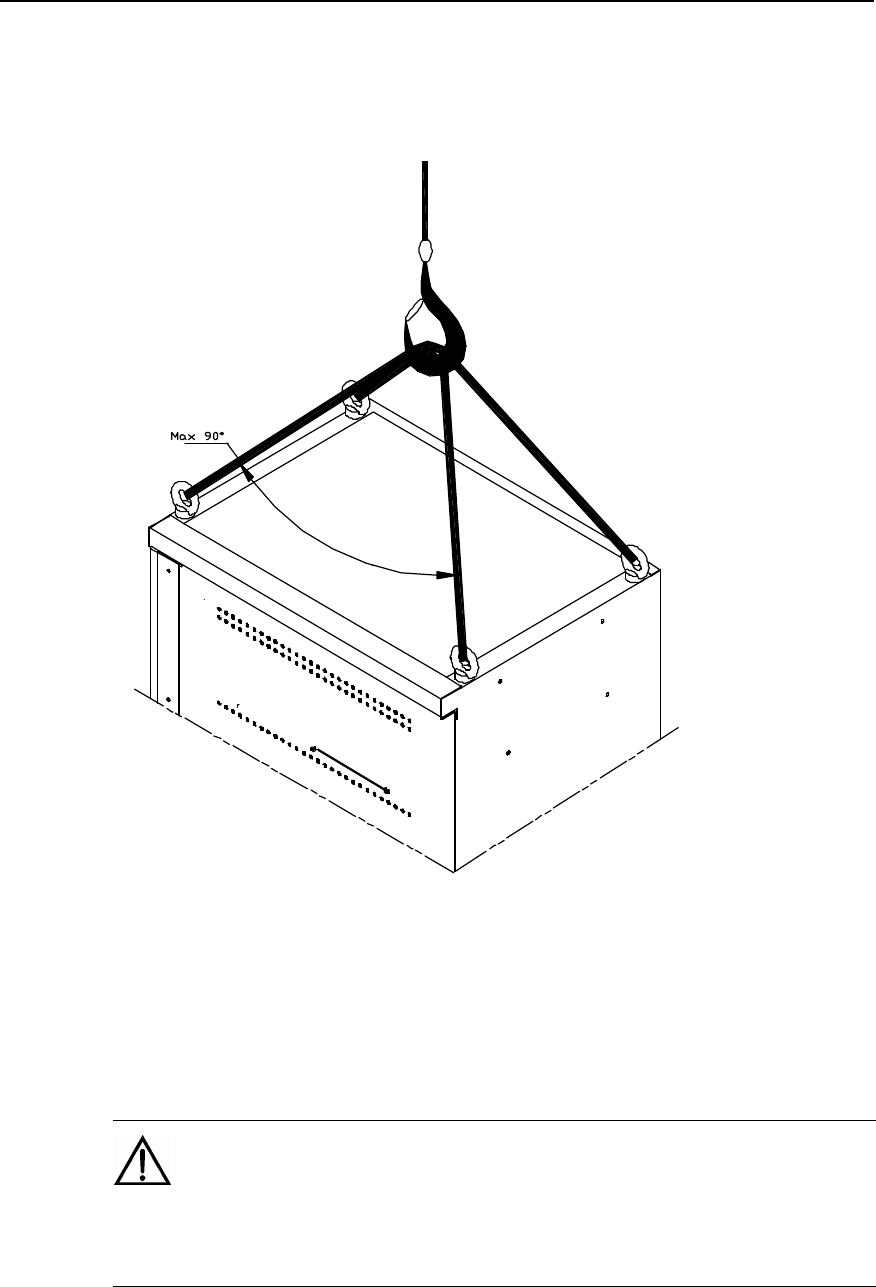
Installation Manual
iSiteC BTS3601C CDMA Base Station Safety Precautions
S-18
l The angle between the straps at the point where they are attached to the lifting
hook should not be greater than 900 to prevent them from getting broken, as
shown in Figure 6.
Figure 6 Hoisting of the heavy objects
10.2 Handling of Heavy Objects
Caution:
When carrying heavy object such as the cabinets, please get everything well prepared for bearing to
avoid bruises and wounds by the heavy object.
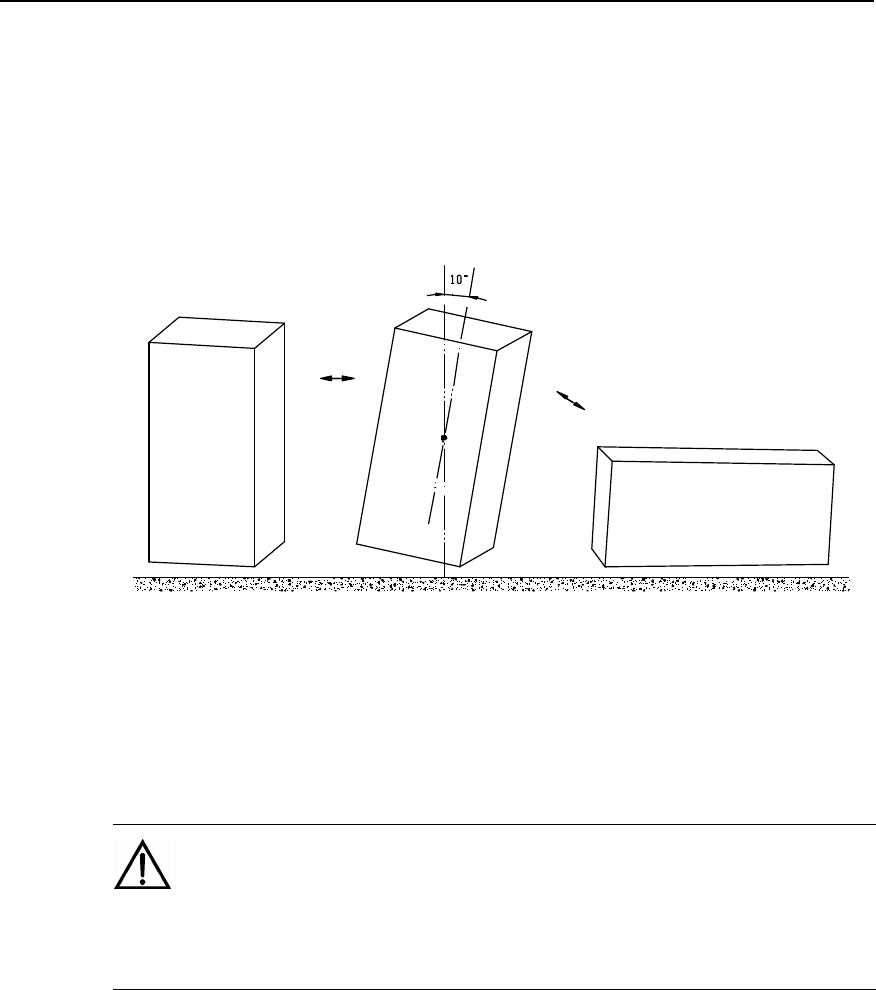
Installation Manual
iSiteC BTS3601C CDMA Base Station Safety Precautions
S-19
l The installation and maintenance of BSC cabinet should be done by 2 to 3
persons at best. The operations of leaning, tilting, and erecting the cabinet
should also be undertaken with the cooperation of 2 to 3 persons. Note that the
cabinet may fall down on account of the center of gravity when the tilt angle of
the center of gravity exceeds 10 degrees.
The process of laying down and erecting a cabinet is shown as Figure 7.
Figure 7 The process of laying down and erecting a cabinet
10.3 Sharp Edges
Warning:
When conveying equipment by hand, please wear protective gloves to prevent cuts and injuries caused
by sharp edges.
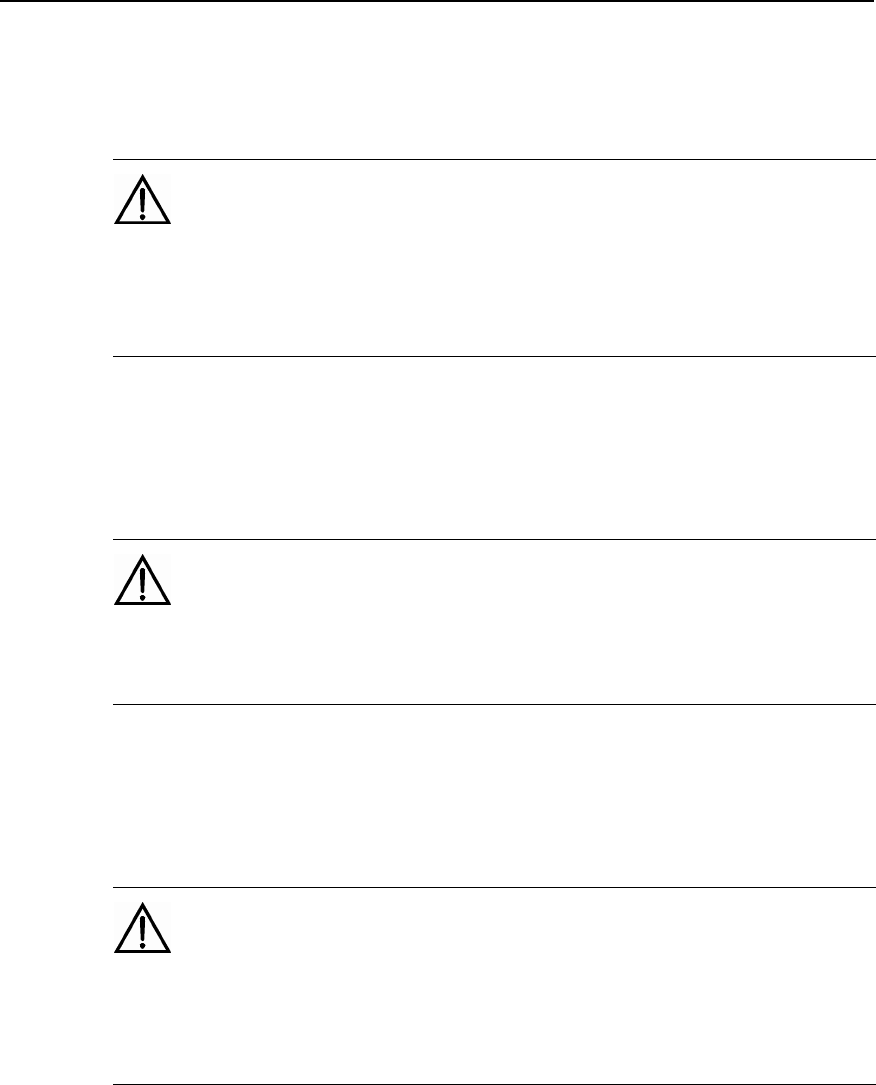
Installation Manual
iSiteC BTS3601C CDMA Base Station Safety Precautions
S-20
10.4 Inserting & Drawing Out the Boards
Caution:
Do not apply too much force when inserting the boards to avoid bending of the pins on the backplane.
Insert the board along the slot to avoid short-circuit resulting from their surfaces contacting each other.
Keep hands off the board circuit, elements, connectors or wiring trough when holding a board by hand.
10.5 Bundling the Signal Cables
Caution:
Signal cables should be tied separately from strong current or high voltage cables, and the spacing
between adjacent cable ties should be at least 150mm.
10.6 Maintenance and Commissioning by a Single Person is not Allowed
Caution:
One should not attempt to perform the maintenance or commissioning in the areas of the equipment
interior unless another qualified professional who can give instructions and is capable of self-saving is
present.
S S